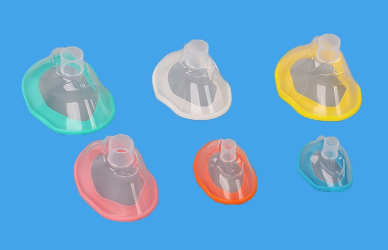-



What Role Do Insufflation Filters Play in Minimally Invasive Surgery?
Views: 185 Author: Site Editor Publish Time: 2024-09-03 Origin: Site

Insufflation filters are a vital component in minimally invasive surgery, ensuring the safety and effectiveness of the procedure. These filters are designed to purify the gas used to inflate the abdominal cavity, removing any contaminants that could pose a risk to the patient. With the increasing popularity of laparoscopic surgery, the demand for high-quality insufflation filters has never been higher. In this article, we will explore the role of insufflation filters in minimally invasive surgery, the different types available, and the factors to consider when choosing the right filter for your needs.
What are insufflation filters and why are they important?
Insufflation filters play a vital role in minimally invasive surgery by ensuring the safety and effectiveness of the procedure. These filters are designed to purify the gas used to inflate the abdominal cavity, typically carbon dioxide, by removing any contaminants that could pose a risk to the patient. Contaminants such as bacteria, particulate matter, and volatile organic compounds can enter the gas supply during the insufflation process and potentially lead to complications or infections.
The importance of insufflation filters lies in their ability to provide a clean and sterile environment for the surgical procedure. By filtering out harmful substances, these filters help to minimize the risk of post-operative infections and other complications. Additionally, they ensure that the gas being used for insufflation is free from impurities that could interfere with the surgical instruments or cause damage to the patient’s tissues.
In recent years, the demand for high-quality insufflation filters has increased significantly due to the growing popularity of laparoscopic surgery. This minimally invasive technique offers numerous benefits, such as reduced scarring, shorter recovery times, and less pain for patients. However, it also requires the use of insufflation filters to maintain a sterile environment and ensure the success of the procedure.
Overall, insufflation filters are a crucial component in minimally invasive surgery, providing a clean and sterile environment for the procedure and minimizing the risk of complications. With the increasing demand for laparoscopic surgery, the importance of these filters is only set to grow in the coming years.
Types of insufflation filters: Which one is right for you?
When it comes to choosing the right insufflation filter for your minimally invasive surgery, there are several factors to consider. The type of filter you select will depend on your specific needs and the requirements of the procedure. Here are some key factors to keep in mind:
1. Porosity: Insufflation filters come in different pore sizes, ranging from 0.2 microns to 5 microns. The smaller the pore size, the more contaminants the filter can capture. However, smaller pore sizes may also restrict gas flow, so it’s important to find a balance between filtration efficiency and gas flow rate.
2. Material: Insufflation filters are typically made from materials such as polyethersulfone (PES), polypropylene (PP), or polyvinylidene fluoride (PVDF). Each material has its own advantages and disadvantages, so it’s important to choose a filter that is compatible with the gas being used and the specific requirements of the procedure.
3. Sterility: Insufflation filters should be sterile to prevent contamination during the procedure. Most filters are pre-sterilized using gamma radiation or ethylene oxide, but it’s still important to check the packaging for any signs of damage or tampering.
4. Size: Insufflation filters come in different sizes, ranging from small handheld filters to larger inline filters. The size you choose will depend on the specific needs of the procedure and the equipment being used.
5. Compatibility: It’s important to choose an insufflation filter that is compatible with the insufflation device being used. Some filters are designed to work with specific brands or models, so be sure to check the specifications before making a purchase.
By considering these factors and consulting with a medical professional, you can choose the right insufflation filter for your minimally invasive surgery. Remember, the quality of the filter can have a significant impact on the success of the procedure, so it’s important to invest in a reliable and trustworthy product.
How to choose the right insufflation filter for your needs
Choosing the right insufflation filter for your needs is crucial to ensure the success and safety of your minimally invasive surgery. Here are some factors to consider when selecting an insufflation filter:
1. Type of Surgery: Different surgical procedures may require different types of insufflation filters. For example, laparoscopic surgeries may require a filter with a higher flow rate to ensure that the abdominal cavity is adequately inflated. Consult with your surgeon to determine the specific requirements for your procedure.
2. Filter Size: Insufflation filters come in various sizes, and the size you choose will depend on the type of insufflation device you are using. It is important to select a filter that is compatible with your device to ensure proper functioning and avoid any complications during the procedure.
3. Filter Material: Insufflation filters can be made from different materials, such as polyethersulfone (PES), polypropylene (PP), or polyvinylidene fluoride (PVDF). Each material has its own advantages and disadvantages, so it is important to choose a filter that meets your specific needs and requirements.
4. Sterility: Insufflation filters should always be sterile to prevent any contamination during the procedure. Look for filters that are pre-sterilized and packaged in a way that ensures their sterility is maintained until they are ready to be used.
5. Quality and Reliability: When choosing an insufflation filter, it is important to select a product from a reputable manufacturer that is known for producing high-quality and reliable products. This will ensure that you are using a filter that is safe and effective for your surgical procedure.
By considering these factors and consulting with your surgeon, you can choose the right insufflation filter for your needs. Remember, the success of your minimally invasive surgery depends on the quality and effectiveness of the tools and equipment used during the procedure.
The future of insufflation filters in minimally invasive surgery
The future of insufflation filters in minimally invasive surgery looks promising, with advancements in technology and increasing demand for laparoscopic procedures driving innovation in this field. Here are some key trends and developments to watch for:
1. Improved filtration efficiency: As the demand for minimally invasive surgery continues to grow, there is a need for insufflation filters that can provide even higher levels of filtration efficiency. Manufacturers are investing in research and development to create filters that can effectively remove a wider range of contaminants, ensuring a sterile and safe surgical environment.
2. Enhanced gas flow: Insufflation filters are becoming more advanced, with designs that allow for greater gas flow without compromising filtration efficiency. This is particularly important for complex laparoscopic procedures that require a high volume of gas to be delivered quickly and efficiently.
3. Integration with digital technology: The future of insufflation filters may involve the integration of digital technology, such as sensors and data analytics, to monitor filter performance in real-time. This could provide valuable insights into filter efficiency and allow for proactive maintenance and replacement, ensuring optimal performance during surgery.
4. Customization options: As the needs of surgeons and healthcare providers become more specialized, there may be a growing demand for customized insufflation filters that are tailored to specific procedures or patient populations. Manufacturers are likely to offer more options for customization in the future.
5. Sustainable and eco-friendly materials: With increasing awareness of environmental sustainability, there is a trend towards using eco-friendly materials in the production of insufflation filters. Manufacturers are exploring alternative materials that are biodegradable or recyclable, without compromising on filter performance.
In conclusion, insufflation filters play a crucial role in minimally invasive surgery, ensuring a sterile and safe environment for surgical procedures. With advancements in technology and increasing demand for laparoscopic procedures, the future of insufflation filters looks promising. By considering factors such as filter size, material, and sterility, surgeons can choose the right filter for their specific needs, ensuring optimal performance and patient safety. As the field of minimally invasive surgery continues to evolve, the role of insufflation filters will remain vital in maintaining the highest standards of care.
Related Products
content is empty!
Related News
content is empty!
CONTACT US
NO.176, Gaoxin 5th Road, High-tech Industrial Park, Rizhao City276800, Shandong Province, China +86-13396234532 +86-13396234532Copyright © 2023 ZhenFu Group All Rights Reserved. Technology By leadong.com | Sitemap | Privacy Policy














